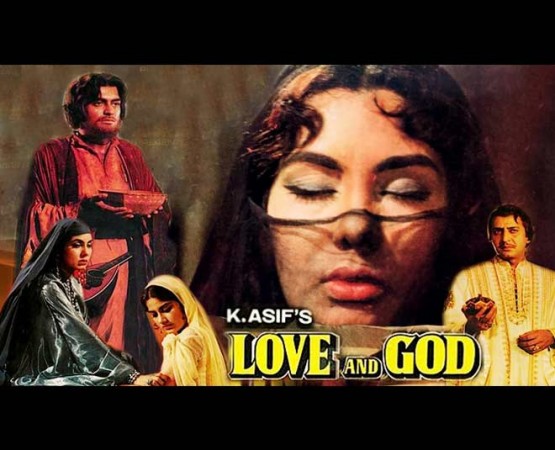
There are stories in the history of Indian cinema that go beyond the confines of the screen, echoing the difficulties faced by filmmakers in their quest for artistic expression. A testament to the enduring spirit of perseverance and dedication is the movie "Love and God," which holds the distinction of being the longest production in Indian cinema history. The story of the movie, which spans an astounding 23 years from its conception to its incomplete release, is one of tenacity, tragedy, and unrealized dreams.
In 1963, the inspirational director Guru Dutt began the arduous task of making "Love and God." Guru Dutt was determined to bring this epic tale of love, redemption, and spiritual awakening to the Indian silver screen after reading Leo Tolstoy's classic book "Resurrection," which served as his inspiration. He had no idea that this project would turn into a multi-decade journey filled with unexpected difficulties and devastating setbacks.
The production of "Love and God" suffered its first setback in 1964 when Guru Dutt passed away unexpectedly. The legendary director K. Asif, known for his landmark work "Mughal-e-Azam," was then handed the reins. K. Asif took over the helm, and the movie continued to be made, albeit slowly. The lavish production design and meticulous attention to detail that were hallmarks of K. Asif's films were evident in the elaborate sets, costumes, and production design of the movie.
But a string of unfortunate occurrences, from budgetary restrictions to cast and crew changes, slowed down the production's progress. The production's budget increased, and unanticipated events appeared to be working against it. The end result was a drawn-out production schedule that lasted decades.
Time went on, and "Love and God" received a cruel hand from fate. Tragically, the lead actor Sanjeev Kumar and the director K. Asif died prior to the completion of their labor of love, which was a major tragedy for the movie. The sudden loss of these important project members cast a pall over the movie's future and rendered it unfinished for all time.
In 1986, more than 20 years after the start of production, "Love and God" was released in part, giving viewers a glimpse of the expansive vision that Guru Dutt and K. Asif had envisioned. Although the film's disjointed state was a painful reminder of the challenges it had encountered, it also served as a tribute to the unwavering resolve of those who had put their hearts and souls into its creation.
The movie "Love and God" is a testament to hard work, giving up something important, and the irrational nature of the filmmaking process. A cautionary tale about the difficulties faced by filmmakers in a field that frequently necessitates compromise and adaptability, it's journey from conception to incomplete release can be seen in this. Despite its shortcomings, "Love and God" still serves as a metaphor for artistic aspiration and a reminder that the pursuit of creative expression is frequently wrought with both triumphs and tragedies.
"Love and God" is a story that goes beyond the limitations of a conventional film narrative and captures the unbreakable spirit of those who dared to dream big. Its 23-year journey from conception to limited release captures the suffering, tenacity, and sheer will that characterize the world of cinema. In spite of the fact that "Love and God" was never finished as a film, its legacy lives on as a testament to the perseverance of those who fought valiantly against all odds to realize a lofty dream.
R.D. Burman's Musical Brilliance in Dosti and Beyond
Daag: A Poem of Love and Unconventional Romance
Aawara Shehzada (1933) and the Birth of Dual Character Drama